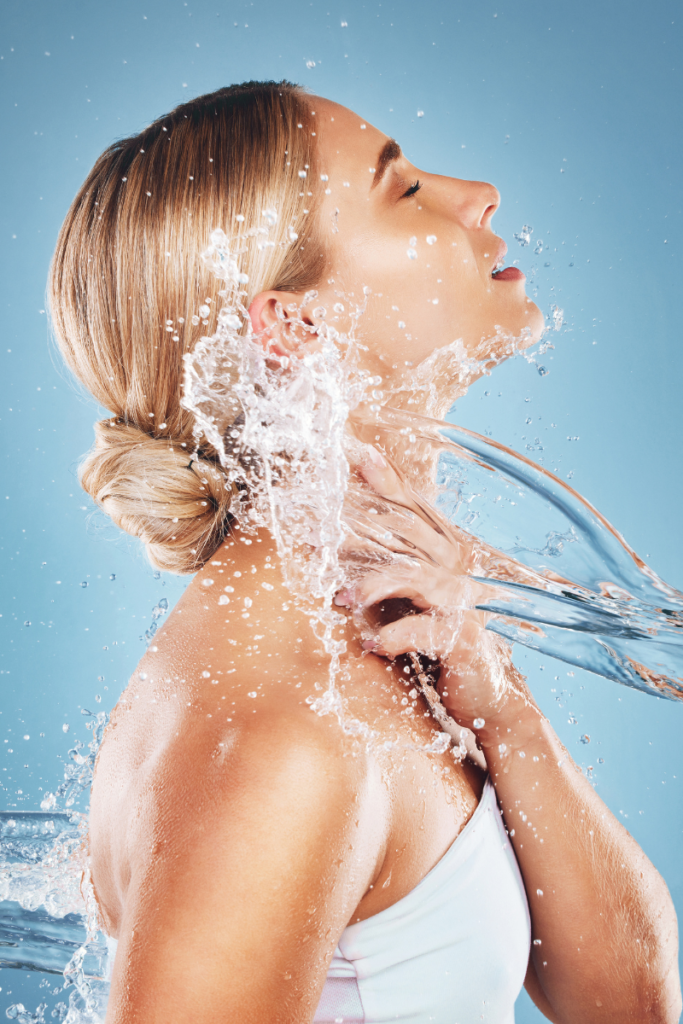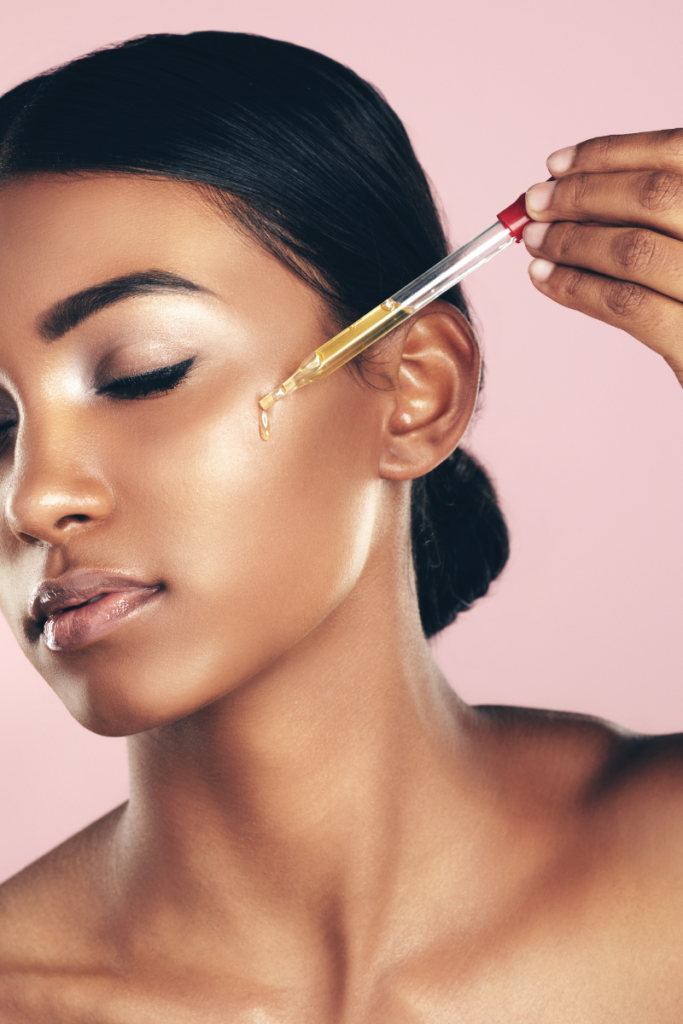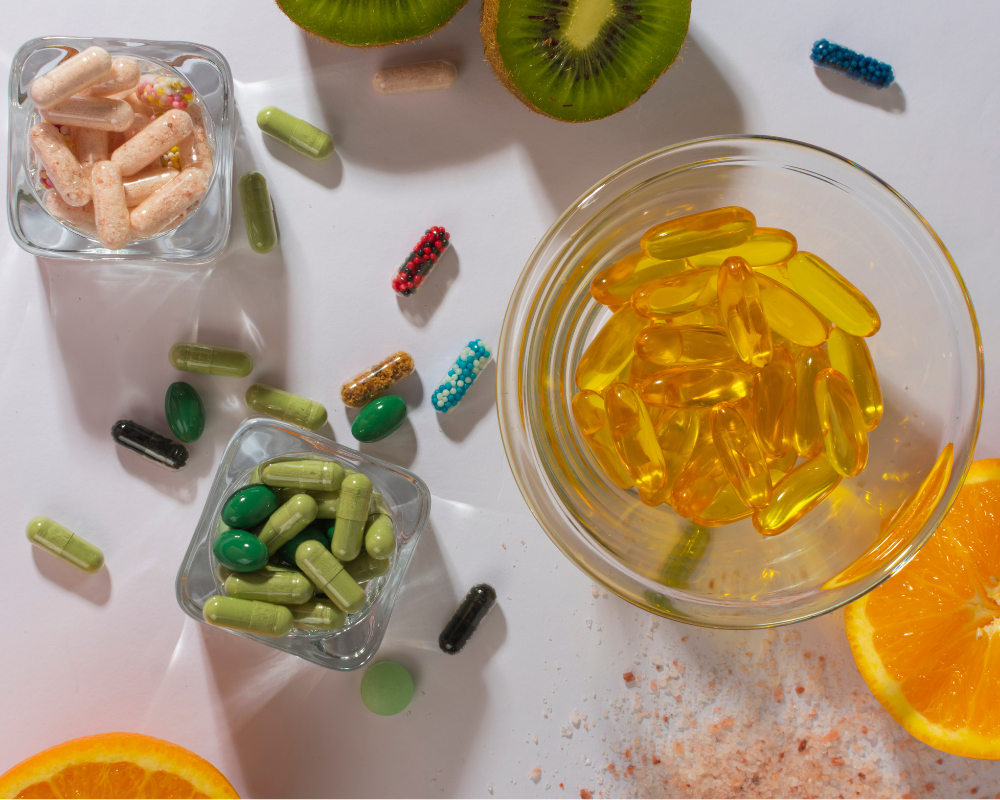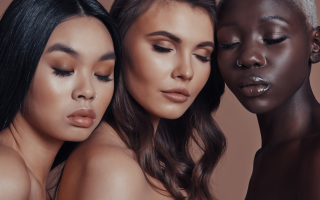Did you know 64% of women over 40 say their skin changed dramatically in midlife—and most had no idea hormones were to blame?” One week you’re glowing like a dewy goddess, and the next you’re Googling “why is my face suddenly a desert?
Welcome to the skincare truth zone, where we decode the mystery behind the mirror. If your once-dewy glow has been replaced by “wait, what is that?” and your favorite moisturizer suddenly feels like a frenemy, you’re not alone. This, my friend, is the start of your hormonal skin revolution.
Your skin, like the rest of your body, evolves with you. And during perimenopause—the transitional years leading up to menopause—those changes can feel like they’re happening overnight. One day, your skincare routine is working fine, and the next, it’s like your products have staged a mutiny. Let’s break down why these hormonal skin changes happen during perimenopause and how you can reclaim your radiance.
The Estrogen Effect: What’s Happening Beneath the Surface

During perimenopause, your estrogen levels start to dip (cue the internal drama). Estrogen is the unsung hero of skin health—it helps maintain hydration, collagen production, elasticity, and that overall bouncy radiance we all know and love. When estrogen drops, so do these skin-loving perks.
This hormonal shift doesn’t just affect your mood or monthly cycle—it’s directly tied to the health and appearance of your skin. You might start to notice:
- Increased dryness or sensitivity
- Fine lines that weren’t on the guest list
- Adult acne (rude!)
- Thinner, more fragile skin
- Dullness or uneven tone
- More visible pores and slower wound healing
It’s not your imagination—your skin is changing. These aren’t isolated issues; they’re all part of the broader hormonal picture. But here’s the truth: this isn’t the end of your skincare journey. It’s the beginning of your skin’s next great chapter.
Your New Skincare Reality: Adapt and Thrive
It’s time to meet your skin where it is today, not where it was five—or even two—years ago. That might mean rethinking your holy-grail products and embracing a new approach to your perimenopause skincare routine that focuses on support, not punishment.
1. Hydration is Queen: Your skin is thirstier than it used to be, and water-based hydration alone might not cut it. Look for products packed with hyaluronic acid, glycerin, and ceramides. These ingredients help attract and retain moisture, fortify the skin barrier, and soothe sensitivity. Consider layering hydration—start with a gentle hydrating toner or essence, follow with a serum, and finish with a rich, nourishing moisturizer. 
2. Gentle is the New Powerful: Forget the scrubby exfoliators and overly harsh acids of your 20s and 30s. Your skin barrier is more vulnerable now, and aggressive products can do more harm than good. Instead, treat your skin with respect and kindness. Opt for gentle exfoliants like lactic acid or PHA (polyhydroxy acids), and look for calming ingredients like niacinamide, oat extract, and centella asiatica.
3. Collagen, Please: Collagen is what keeps skin firm, plump, and elastic—but production declines with estrogen. Enter your new besties: peptides, retinoids, and vitamin C. Peptides send signals to your skin to produce more collagen. Retinoids (yes, even the gentler ones) help renew skin and boost elasticity. Vitamin C fights free radicals and brightens dull skin. These are your skin’s cheerleading squad—supportive, energizing, and totally on your side.
4. SPF Every. Single. Day: No exceptions. Your skin is more prone to pigmentation, sun damage, and slower healing during perimenopause. Sunscreen isn’t just about wrinkle prevention—it’s about maintaining your skin’s integrity and long-term health. Look for a broad-spectrum SPF of 30 or higher, and reapply if you’re outside or near windows. Daily sunscreen is one of the best skincare practices for perimenopausal skin.
5. Don’t Skip the Neck (or Chest): Estrogen loss doesn’t just affect your face. Your neck and décolletage are often the first to show signs of thinning skin and sun damage. Extend your skincare down to these areas, or consider dedicated products formulated specifically for them.
Smart Ingredients For Hormonal Skin: What To Use And Why
Choosing skincare products when your hormones are acting like chaos gremlins? Yeah, it’s like trying to assemble IKEA furniture without the instructions—or the little Allen wrench. But don’t worry, I’ve decoded the ingredients aisle for you. Whether you’re dealing with oil slicks, hormonal breakouts, menopausal dryness, or random skin freak-outs, here’s what to look for (and what they actually do).
For Breakouts, Oil Slick Skin & Inflamed Faces (Blame Androgens & Cortisol)
Salicylic Acid (BHA)
This one’s the pore whisperer. It’s oil-soluble, which means it dives deep into your pores to unclog them from the inside out. Great for blackheads, whiteheads, and that angry chin acne that flares up when your hormones throw a tantrum.
Benzoyl Peroxide
The bacteria assassin. It kills acne-causing bacteria (C. acnes) and calms inflammation. Use with caution—she’s strong and drying. Start slow, and moisturize like your glow depends on it (because it does).
Retinoids (Retinol, Adapalene, Tretinoin)
 The multitaskers of skincare. These Vitamin A powerhouses increase cell turnover, prevent clogged pores, reduce inflammation, and boost collagen. Basically, they’re your hormonal skin’s personal trainer. Start low and slow, and always—always—wear SPF, unless you enjoy sunburns and regret.
The multitaskers of skincare. These Vitamin A powerhouses increase cell turnover, prevent clogged pores, reduce inflammation, and boost collagen. Basically, they’re your hormonal skin’s personal trainer. Start low and slow, and always—always—wear SPF, unless you enjoy sunburns and regret.
Niacinamide (Vitamin B3)
Your skin’s chill pill. Niacinamide regulates oil, minimizes pores, evens tone, reduces redness, and strengthens the skin barrier. Bonus: it plays nice with almost everyone and rarely causes drama.
Azelaic Acid
Think of it as the overachiever who doesn’t brag. It clears acne, calms inflammation, fades dark spots, and is safe for sensitive skin.
A Few Words Of Wisdom Before You Go Skincare Partying
Don’t go full ingredient maximalist. Introduce new actives one at a time, especially if your skin is sensitive or already irritated. More is not always better. And if your skin’s flipping out on the regular—like monthly cystic acne, weird texture changes, or dryness that laughs at your moisturizer—it’s time to phone a derm. Especially if other things feel off (irregular periods, new hair growth, mood swings), a hormone-savvy specialist can help you sort out the deeper stuff.
A Revolution with Supplements, Too?

Here’s the exciting part—we’re not stopping at topicals. Your skincare doesn’t end at your jawline. Internal support is just as crucial during this hormonal transition. We’ll soon be diving into the world of skin-loving supplements that work from the inside out.
Think collagen powders to support structure, omega-rich oils to soothe inflammation and dryness, and hormone-balancing blends that may ease perimenopausal symptoms overall. There’s growing research showing that the right nutrients can improve not just your skin’s appearance but also your energy, sleep, and mood. Win-win.
We’ll also explore adaptogens (like ashwagandha and maca), probiotics for the gut-skin connection, and key vitamins like D, E, and biotin. Whether you’re new to supplements or a seasoned wellness warrior, there’s something in this conversation for everyone. These supplements could play a powerful role in your skincare for perimenopausal skin strategy.
Conclusion
This is just the beginning. Up next, we’re breaking down the best skincare ingredients for perimenopausal skin, the truth about hormone-safe retinoids, and how to build a routine that actually works with your biology—not against it.
We’ll also explore the emotional side of skincare. Because let’s be real—skin changes can affect our confidence. But aging doesn’t mean fading. It means evolving. And that evolution can be beautiful, powerful, and—yes—glowing.
So take a deep breath, give your skin a gentle pat, and know this: you’re not alone. The hormonal skin revolution is real—and it’s radiant. Stick around, because your skin’s next act might just be its most luminous yet.
P.S. Got questions or want to share your skin story? We’re all ears (and empathy). Drop a comment or connect—we’re on this journey together. And don’t forget to subscribe so you don’t miss our next deep dive into skincare for perimenopausal skin, supplements, and the science behind your glow.
Further Reading & Reputable Sources
Reputable Health Information Websites: Sites like the Mayo Clinic, Cleveland Clinic, and medically reviewed articles on sites like Healthline or WebMD often provide reliable summaries of how hormones affect skin during different life stages.
- American Academy of Dermatology (AAD): Offers extensive, patient-friendly information on various skin conditions and treatments.
- The Endocrine Society Is the leading organization for endocrinologists (hormone specialists), providing research and patient education.






